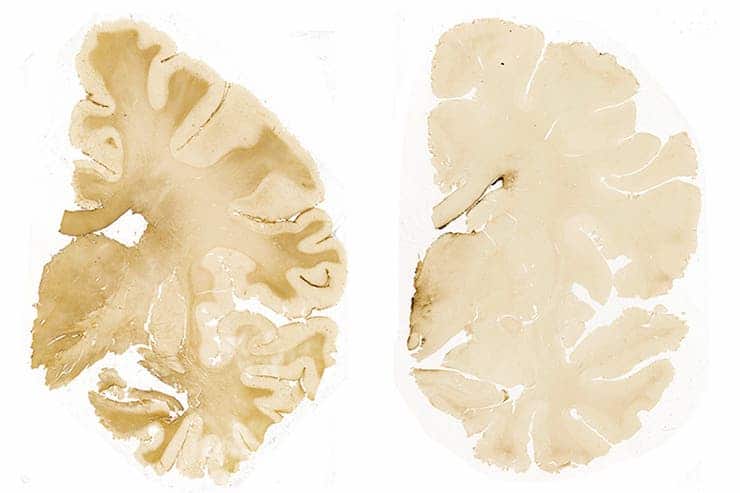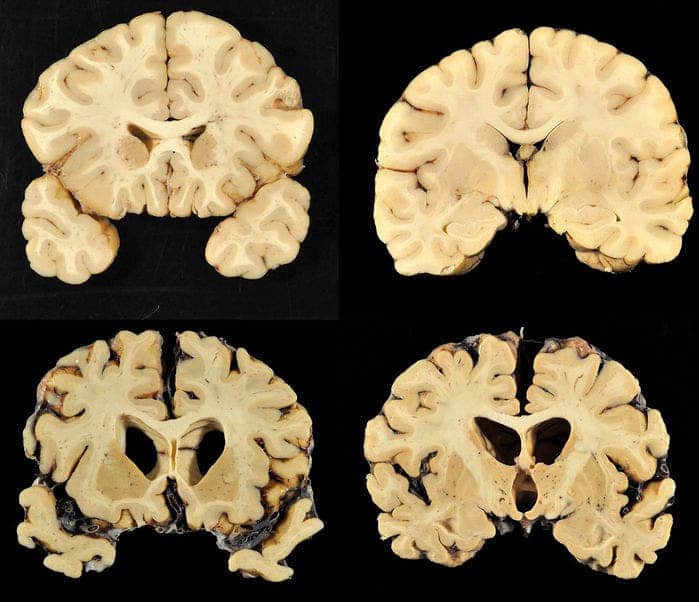Professional football players take a huge pounding during each game, and repeated head collisions that can lead to concussions are the norm. It’s just part of the game, any athlete will tell you. However, not many are aware of the huge risks they face. According to a new study, every year of playing tackle football raises the risk of developing chronic traumatic encephalopathy (CTE) by 30%. Every 2.5 years of play doubles the risk.
“While we don’t yet know the absolute risk of developing CTE among American football players, we now can quantify that each year of play increases the odds of developing CTE by 30 percent,” says lead author Jesse Mez, director of Boston University’s Alzheimer’s Disease Center Clinical Core, and a CTE Center researcher. “We hope that these findings will guide players, family members, and physicians in making informed decisions regarding play.”

Chronic Traumatic Encephalopathy (CTE) is a degenerative brain disease found in athletes, military veterans, and others with a history of repetitive brain trauma. In people with CTE, protein clumps form in the brain that literally kill brain cells.
CTE was formerly believed to exist primarily among boxers and was referred to as dementia pugilistica, but is now classed as a subtype of CTE.
At the onset of the disease, which usually surfaces in a person’s late 20s and 30s, the patient’s mood and behavior may change radically. Some common changes seen include impulse control problems, aggression, depression, and paranoia. As the disease progresses, some patients may experience problems with thinking and memory, including memory loss, confusion, impaired judgment, and eventually progressive dementia.
There’s no way to properly diagnose CTE in living people — researchers only have the tools to do so in deceased individuals. In a new study, researchers led by Dr. Ann McKee, director of the VA-BU-CLF Brain Bank and the foremost authority on CTE in the world, analyzed the brains of 266 deceased former amateur and professional football players.
Unlike previous CTE studies, the present one also included 43 brains of former football players who did not have CTE. This is important because having a control group enabled the researchers to come up with more confident assessments of the relationship between CTE and the number of years a person plays football. Also, McKee has now had access to about 700 donor brains — a significant sample size that makes conclusions more statistically relevant.
Besides looking for brain damage, the researchers also gathered data on each deceased person such as the number of concussions, the age when they first started playing tackle football, the presence of another disease, and the severity of CTE symptoms, among other things. This information was supplied from an online database but also by the family members of the deceased donor.
The results suggest that:
- Among football players with CTE, the odds of developing severe symptoms double for every 5.3 years of football played.
- Those who played tackle football for fewer than 4.5 years were 10 times less likely to develop CTE than those who played longer.
- Those who played more than 14.5 years were 10 times more likely to develop CTE than those who played fewer years.

The average length of an NFL player’s career is 3.3 years but there have been cases where players developed CTE after playing for fewer years. Conversely, the researchers note that several players with football careers longer than 15 years did not develop CTE. Like with many other diseases, there’s a factor of chance involved.
“This study is a testament to the hundreds of families who have donated their loved one’s brain…. It is only because of this support that we can confidently estimate the strength of the relationship between duration of [football] play and risk of CTE,” says the study’s corresponding author Ann McKee, director of the Boston University CTE Center, and chief of neuropathology at VA Boston Healthcare System.

In 2017, a lot of attention was drawn to CTE and the ungodly number of NFL players who suffer from brain disease after McKee published a study, which found that 110 out of 111 former NFL players had CTE. The media backlash was pretty intense with many voices criticizing the NFL for not enforcing more rules that might, at least, soften the impact of this devastating disease.
Early this year, the NFL announced that reported player concussions in the 2018 regular season were down 29 percent from the previous year. But, a 2018 study published in the journal Brain by McKee and colleagues showed that CTE can develop from repeated injuries to the head, and not necessarily concussions as previously believed.
In the future, McKee and colleagues will continue their research, hoping to eventually find the right approach in order to diagnose CTE in living patients. In the meantime, the researchers say that this kind of work should help football players and their families understand the full risks of the job so that they might make an informed decision.






